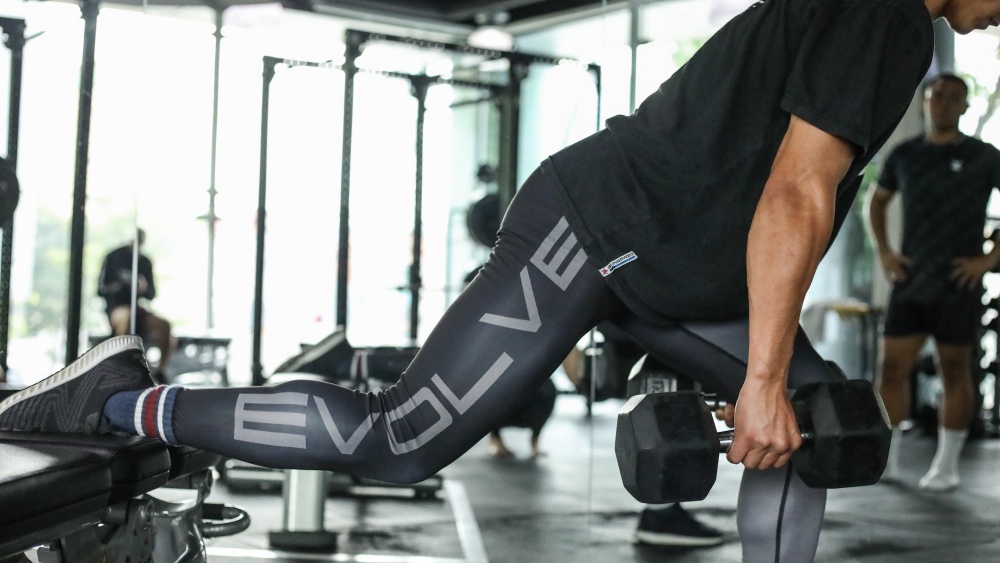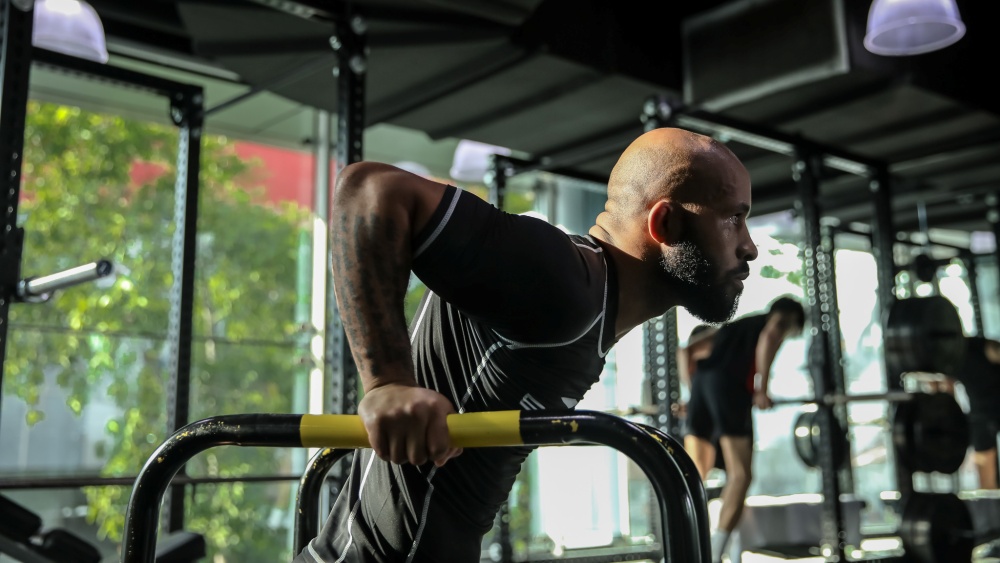You can train your body to supply energy in ways that help you achieve specific exercise or fitness goals. Say you want to build muscle endurance to boost your performance in competitive running. You do this by conditioning the body to prioritize the metabolic pathway that limits the buildup of lactic acid.
If you’re like most people, you want to use metabolic conditioning to build muscle or increase your metabolic rate. This popular variation of metabolic training is the main focus of this piece.
Metabolic training conditions the body to burn as many calories as possible during and after a workout. With time the regimen increases your resting metabolic rate, and the body maintains a heightened calorie burn for extended periods.
This type of fitness regimen combines strength training and cardio exercises to create brief, demanding workouts. The workout sessions should range from medium to high intensity, with a comfortable learning curve for beginners. Here’s how metabolic training works to burn calories, torch fat, and build muscle.
The Principles Behind Metabolic Conditioning
The body is constantly working to supply energy to your cells at a rate that matches your activity level. This energy supply system has three settings or metabolic pathways, with each pathway meeting different needs. All three pathways release energy by breaking down at least one of the following:
- Adenosine Triphosphate (ATP)
- Glucose
- Carbohydrates
- Fats
- In rare circumstances, protein
The list above describes different forms of fuel that the body breaks down for energy. ATP is the easiest molecule to metabolize, while fats and proteins require more time to break down. This brings us to the concept of metabolic pathways.
Three Energy Pathways That Metabolic Training Targets
Digestion breaks down carbohydrates into glucose, fats into fatty acids, and proteins into amino acids. These nutrients then enter the bloodstream for transportation to storage or the cells that need them.
Cells constantly need energy and each one keeps its tiny energy stash in the form of ATP molecules. However, this stash is too small to sustain high or constant energy demands. This is where the supplies in the bloodstream step in, starting with blood glucose.
The different energy pathways describe how a cell metabolizes different fuel sources.
1) Phosphagen Pathway (immediate metabolic pathway)
The body uses this metabolic pathway at the beginning of any form of exertion, including exercise. If you had to jump out of the way of a charging bull, this is the instant supply route that will power your muscles.
ATP is a ready energy source that sits on standby inside each cell. The cell breaks one chemical bond in the ATP molecule, releasing energy for tasks like muscle contraction.
The (former) ATP molecule is missing a piece of itself, which triggers a second chemical process. This process restores the missing piece to the incomplete molecule. The restored ATP molecule remains on standby until the cell needs more energy.
2) Anaerobic Pathway (intermediate)
This energy pathway breaks down glucose and glycogen into smaller molecules in the absence of oxygen. The chemical breakdown of the sugars releases energy that cells use to reassemble their resident ATP molecules.
Next, the cells will break down the newly reconstituted ATP molecules. At the same time, the cells will continue to break down sugars and use the resulting energy to put the metabolized ATP molecules back together. This cycle continues during moderate to high-intensity exercise until the body runs out of sugar in the bloodstream. At that point, the body will switch to the aerobic pathway.
3) Aerobic Pathway (long-term)
The body can only sustain high-intensity exertion for so long before it slows down. This means that oxygen will slowly start to reach the cells, allowing the body to metabolize ‘fuel’ in the presence of oxygen.
The body will primarily break down fatty acids for energy with the aerobic energy pathway. Metabolic training for endurance sports conditions the body to use the aerobic pathway. In this case, conditioning involves improving blood flow, allowing for efficient oxygen transportation.
Metabolic Training, Timing, And Activity-To-Rest Ratio
The first metabolic pathway provides the immediate energy your body needs in an ‘emergency.’ Activate this pathway by doing intense exercise for 30 seconds or less. After the burst of activity, you’ll need to rest for between 90 seconds and five minutes. This rest period prevents the body from switching to the anaerobic pathway. Now repeat this activity-rest cycle for the duration of your workout.
The anaerobic pathway activates when you do high-intensity exercise for between one and four minutes. Rest for one to three minutes to keep the body from activating the aerobic metabolic pathway.
You activate the aerobic pathway by doing fairly low-intensity exercise for extended periods. Jogging or a ten-minute bike ride will do the trick.
Ten Effective Exercises For Metabolic Training
Compound and full-body exercises are effective when it comes to metabolic training. Cardio exercises are also necessary for people who participate in endurance sports to boost blood circulation. Do the following exercises at an intensity that matches your fitness goals.
1) Burpee
The burpee is a full-body exercise that sculpts all the muscle groups it targets. Think of the exercise as a combination of the pushup and the jump-squat. Your starting position will be with your feet at shoulder width. Now complete one rep by doing the following steps:
- Keeping your spine straight and core engaged, lower yourself into a deep squat.
- Place your hands on the floor in front of you and use them to brace yourself.
- Using your arms for support, hop your feet backward. This should put your body in a high plank position.
- Keep your spine and core engaged as you do a single pushup.
- Hop your feet forward so that your body resumes the squat position.
- Shift your weight to your legs and leap to a standing position.
Try to raise your arms as you jump to the starting position. This small addition makes the exercise even more demanding. If you want to condition your body to burn maximum calories, do as many perfect reps as you can in 10 seconds. Rest for between 30 and 120 seconds before doing the next round of burpees. A work-to-rest ratio of 30s to 60s (1:2) turns the burpee into anaerobic exercise.
2) Mountain Climber
This is another full-body exercise that is perfect for metabolic training. Like the burpee, mountain climber reps effectively build muscle and create a calorie after-burn. Your starting position should be in a high plank, with your core and spine engaged. Complete one rep of the mountain climber with the following steps:
- From the high plank position, bring the right knee forward and towards your chest.
- Extend the right leg back to its starting position.
- Bring the left knee forward and towards your chest.
- Extend the left leg back to its starting position.
Do the exercise at an intensity and work-rest ratio that aligns with your fitness goals. Let’s say your goal is to prioritize fat burning, muscle endurance, and better blood circulation. You can cycle through a minute of burpees followed by a few seconds of rest.
3) Frog Pushup
This exercise conditions your leg muscles for explosive bursts of motion, which is good for sprinters. The frog pushup carries the same benefits for your chest and arm muscles, which helps with pull-ups. Follow the steps below to complete one rep of the frog pushup:
- Lower yourself into a high plank, keep your spine straight and engage your core.
- Jump your feet forward to position your body in a frog-like squat.
- Now jump your feet back to put your body back in a plank position.
Do this frog-like version of the pushup at the intensity and duration that helps your fitness goals. You can create a caloric afterburn by doing a maximum number of perfect reps in 45 seconds. Rest for 90 seconds and do the next work-rest cycle.
4) Pull-Up
The pull-up is an upper body exercise that targets the arms, chest, and shoulders. To a lesser degree, the pull-up also works the core. Start by gripping the overhead bar at slightly wider than shoulder-width distance and pull yourself up as you:
- Engage your biceps and the muscles of your lower arms.
- Contract your back, chest, and shoulder muscles (this should curve your spine, but only a little).
- Flex your shoulder blades downwards and bring them together.
- Use your chest, back, and core to push your torso upwards.
These pointers allow you to recruit different muscle groups to propel yourself upwards in your torso. Choose a work-rest ratio and intensity that allows the pull-up that activates the energy pathway you want.
5) Kettlebell Swing
The uneven weight distribution of the kettlebell makes it ideal for strength training and cardio. Kettlebell exercises force you to work on your balance with each repetition. This triggers a massive calorie burn that keeps going as the muscles self-repair after a workout. Follow the steps below to execute a perfect kettlebell swing:
- Stand right in front of the kettlebell, with your feet together and touching the weight.
- Part your feet at shoulder-width distance and bend forward, bending your knees as you do it.
- The kettlebell should now be within reach, so grab it with both hands.
- Swing the weight backward by passing it between your legs.
- Engage your glutes, core, and back muscles before swinging the weight forward.
- Raise yourself to a standing position as you swing the kettlebell forward and upward.
Use this full-body exercise to build muscle, build endurance or raise the body’s metabolic rate. Adjust the timing of the exercise to activate the energy path you want.
6) Weighted Squats
Squats are compound exercises that target the lower half of the body. The squat will also place a few demands on the abs and lower back. Adding weights to squat exercises makes them more effective at burning calories and working muscles. Use these variations of the exercise to make your workouts more interesting:
- Front squat (with barbell)
- Back squat (with barbell)
- Dumbbell squat
- Kettlebell squat
How you carry the weight changes the muscles that do the heavy lifting. For example, a front squat targets the chest muscles and abs more than a back squat would.
7) The Lunge Jump
This compound exercise combines cardio and strength training, which is convenient for anyone on a tight schedule. The exercise involves lowering yourself into a lunge before jumping back to standing. Use the lunge to target your legs, chest, core, and glutes.
8) Shuttle Sprint
The shuttle run is a common drill for athletes who play team sports. This exercise lends itself to high-intensity workouts that condition the heart and circulatory system.
Shuttle sprints involve running from one line marker to another at a set speed level. You do as many sprints as possible in a set amount of time. A ten-second set followed by 90 seconds of rest will activate the phosphagen pathway. However, most athletes prefer longer sets that build agility and endurance.
9) In-And-Out Squats
This cardio exercise delivers an afterburn that continues long after your workout. Each rep looks like a hybrid of a regular squat and a jumping jack. Use the in-and-out squat as anaerobic exercise that trains your body to rack up an oxygen debt.
Do as many reps as you can for 60 seconds and rest for 120 seconds before starting a new work-rest cycle. The anaerobic energy path will activate with each cycle.
10) Bucking Hop
Use this challenging, full-body workout to target your chest, shoulders, and core. The bucking hop also improves your balance, which can be helpful in sports that involve hurdles and obstacles.
Assume a high plank position and hop your feet forward to do a bucking hop. This move should have you bracing your body with your hands and feet. Your legs should bend at the knee to form a 90-degree angle without touching the ground. From this position, hop your feet from side to side, using your arms for support.
Craft A Metabolic Training Routine That Meets Your Needs
Most metabolic training regimens require intense workouts that require a lot of accuracy. This means that consulting a trainer or fitness expert is an excellent way to start this leg of your fitness journey. If you are interested to learn more, consider trying a complimentary WarriorFit class at Evolve MMA.
Book your complimentary trial class with our World Champions below!
If you have any other questions regarding Evolve MMA and the programs we offer, you can get in touch with our membership executives at the following locations:
Evolve MMA (Far East Square)
26 China Street
Far East Square #01-01
Singapore 049568
Phone: (65) 6536 4525
Evolve MMA (Orchard Central)
181 Orchard Road
#06-01 Orchard Central
Singapore 238896
Phone: (65) 6536 4556
Evolve MMA (KINEX)
11 Tanjong Katong Road
#02-52 KINEX
Singapore 437157
Phone: (65) 6288 2293
Evolve MMA (Clarke Quay Central)
6 Eu Tong Sen Street
#04-18 Clarke Quay Central
Singapore 059817
Phone: (65) 6226 2150


















